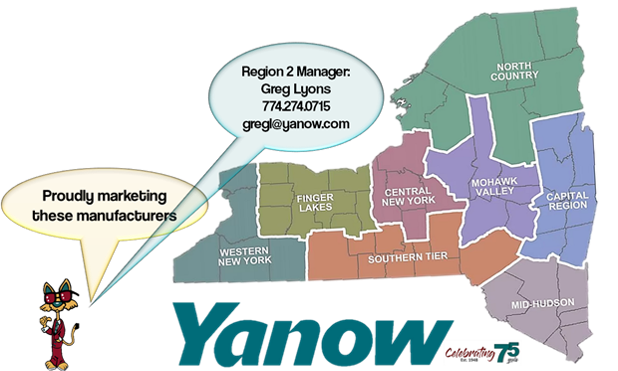10 Growth Concepts for 2023
 Over the holidays I was contemplating writing a “10 Trends” type of article. You know, the type where a consultant or journalist theorizes what will occur in the coming year and says “you should do ‘x’ to generate growth.
Over the holidays I was contemplating writing a “10 Trends” type of article. You know, the type where a consultant or journalist theorizes what will occur in the coming year and says “you should do ‘x’ to generate growth.
And then I starting thinking “why”? I mean, enough has probably been talked about industry challenges. No one has the crystal ball regarding the economy. We know residential will change by market, and so will industrial (which has a better chance for growth). Anyone want to hear about labor shortages again (for customers and distributor talent?) How about the ever expected “digital transformation” or how if you are not analyzing your data you’re going to be out of business (or at least not informed.) Oh, and can anyone guess what will happen with renewables? Electrification? EV opportunities? How about project the price of copper at the end of 2023 (and does that mean anything if it goes up and then comes down … or stays sideways? How about the number of distributors that will be acquired (will there be many left that are acquirable?)
Yes, I could put out a list of 10 predictions for 2023 and, if I looked at it this time next year, they probably would be wrong.
So, a different approach.
These aren’t necessarily predictions or trends but areas for you to consider … because some others are and they are thinking of how this could impact them, and the industry.
Perhaps this should be considered “10 Things I’m Thinking About for 2023”.
And this list is in no particular order of importance.
- Major manufacturers in key product categories look at refining their channel strategies and redirect sales efforts. This is a direct result of industry consolidation coupled with management directives to control costs. Companies will consider stratifying their customers and offer different services, or more resources, to those they want to grow with. But the battle for customer dollars remains at the branch level so many will still sell to anyone. Behind the scenes, however, business dynamics will be different and larger companies will become more profitable.
- Labor concerns accelerate function and role automation and refinement. For years everyone has talked about electrician / tradespeople shortages. This has now expanded to lack of manufacturing employees, warehouse staff and drivers, let alone the ever-present discussion of “trained / experienced” people. The reason is population dynamics. The industry grayed over the years and companies didn’t invest in back-ups. Its come to roost. Your experienced people will leave (retire). Companies that can will invest to automate roles that have repetitive processes. This is the epitome of “more with less”. Technology investment to replace the need for backfilling people. Millie can stay with the company until she wants to retire, but we don’t have to give her as much work today. More warehouse automation; different delivery methods; different “paper” processing; integrating with customer systems and more. The question then becomes, do you have the right IT and process management people.
- Rate of consolidation slows. Yes, we’ll see less distributors acquired. The past two years saw 57 companies acquired. The rate slows because there are fewer to be acquired. But more do not have succession plans and those who have gotten larger will digest some acquisitions and then reinvest their larger cash flow for more acquisitions … and then will diversify. Manufacturers are still looking to make acquisitions, just need willing partners. I’ve also been thinking “what will be industry ramifications of consolidation beyond some of the other items on this list of 10?”
- Distributors diversify but struggle due to commitment issues. Distributors talk about diversifying into other segments of the electrical market or other industries, but rarely do. Manufacturers do this better. Reps are also challenged. It’s inevitably a commitment issue – of time, money, people, and other resources. But, for distributors, it’s the same infrastructure but different product, suppliers and usually salespeople. All which can be acquired. As customers diversify (think contractors – now they are electrical and more, or fully MEP), this is something independent distributors could consider if they are not planning on selling in the near future. It also works for industrially-oriented distributors. Reps could acquire agencies in other verticals also. Few will do. Most will talk.
- One to few marketing replaces digital to all efforts. COVID, along with the cost to send an email, made digital marketing the darling of many. The challenge is everyone has too many emails to read. How to differentiate? Back to integrated marketing to break through the electronic clutter. Efficiencies, and improved messaging, combined with a little data mining (okay, analytics) will help target like audiences for one to few marketing.
- Brand builders win but takes time and dedication. In an industry where there are lots of “box (product) sellers, those with a value proposition that can be communicated can differentiate and win business, sometimes at a nominal premium (which becomes additive). They key questions then become “why buy from you” and “can you articulate, prove and live your brand proposition?” This is what enables companies to not be commodities. It is hard to discern, tough to have a vision of what you want to be, difficult to drive within your company but rewarding when it is executed, and customers feel the difference.
- Vertical marketing (audience and industry) drive growth. This is the essence of demand generation. By identifying target markets and communicating solutions, business development teams (sales and marketing) can identify opportunities to drive growth. Manufacturers, reps and distributors that focus on verticals are able to take advantage of opportunities resulting in incremental growth and market share gains. Verticals exist in every market, and for every product, that can represent opportunities.
- Regional distributors pursue “on the road” account specific strategies. More medium and large contractors than ever before are winning projects outside their traditional geographic market. Rather than do business with “new” distributors they prefer to work with known entities. This represent opportunities for regional distributors to go “on the road” with their key customers … if those customers know that their distributor is willing to travel with them. This takes “drop ship” to a new level.
- OPM. OPM means “Other People’s Money.” For many distributors this has been synonymous with “asking suppliers for money.” Now it means (or also means) benefiting from government subsidies. The market is awash with monies that have been appropriated by Congress. Distributors that can sleuth out opportunities funded by these initiatives, or can recommend usage of the funds, can generate opportunities. Funds exist from the COVID bills, the Infrastructure Investment and Jobs Act, the Inflation Reduction Act (IRA), and other set-asides for rural broadband as well as additional electric vehicle charging networks. These funds are also why there is extensive automotive construction projects (EV and battery factories) being announced throughout the country. Manufacturers and marketing groups can invest in this research to help their reps and distributors.
- Secular markets. Speaking of OPM, also think of secular markets that represent growth opportunities and are foundational support for today’s, and tomorrow’s, economy. These will be staples of the industry for the next 10 years and will continuously generate electrical material revenue opportunities. Consider these “the gifts that can keep on giving.” Identifying them national, regionally or potentially locally and building a competency around them can lead to sustainable, profitable, revenue.
While these are not “10 Predictions for 2023” or “10 Trends”, hopefully these are 10 concepts for you to consider to help you profitably drive growth in 2023.






















